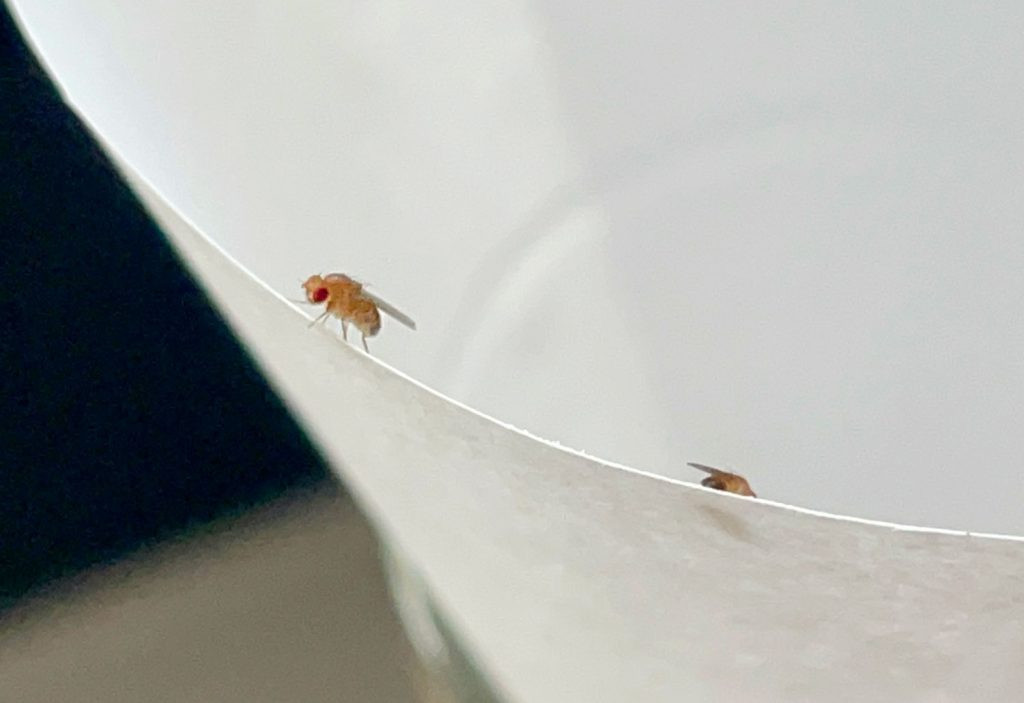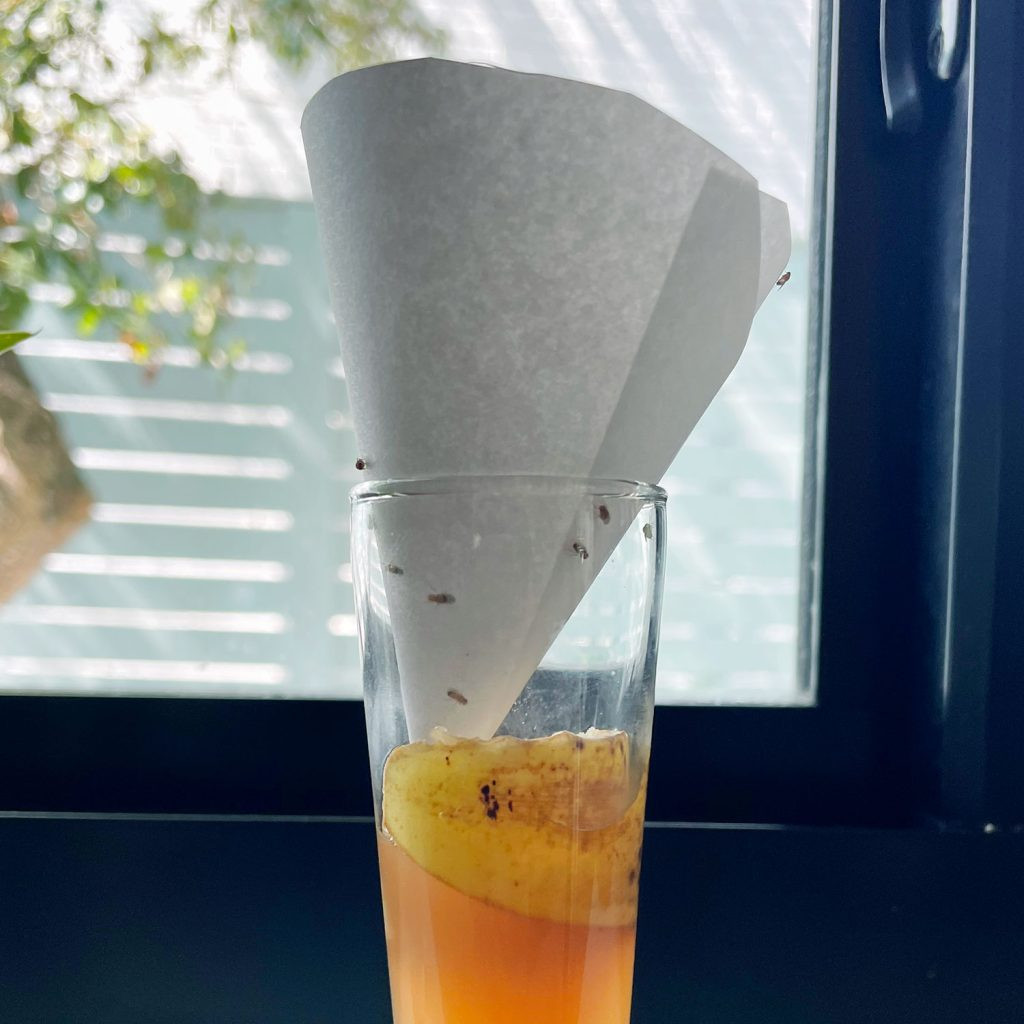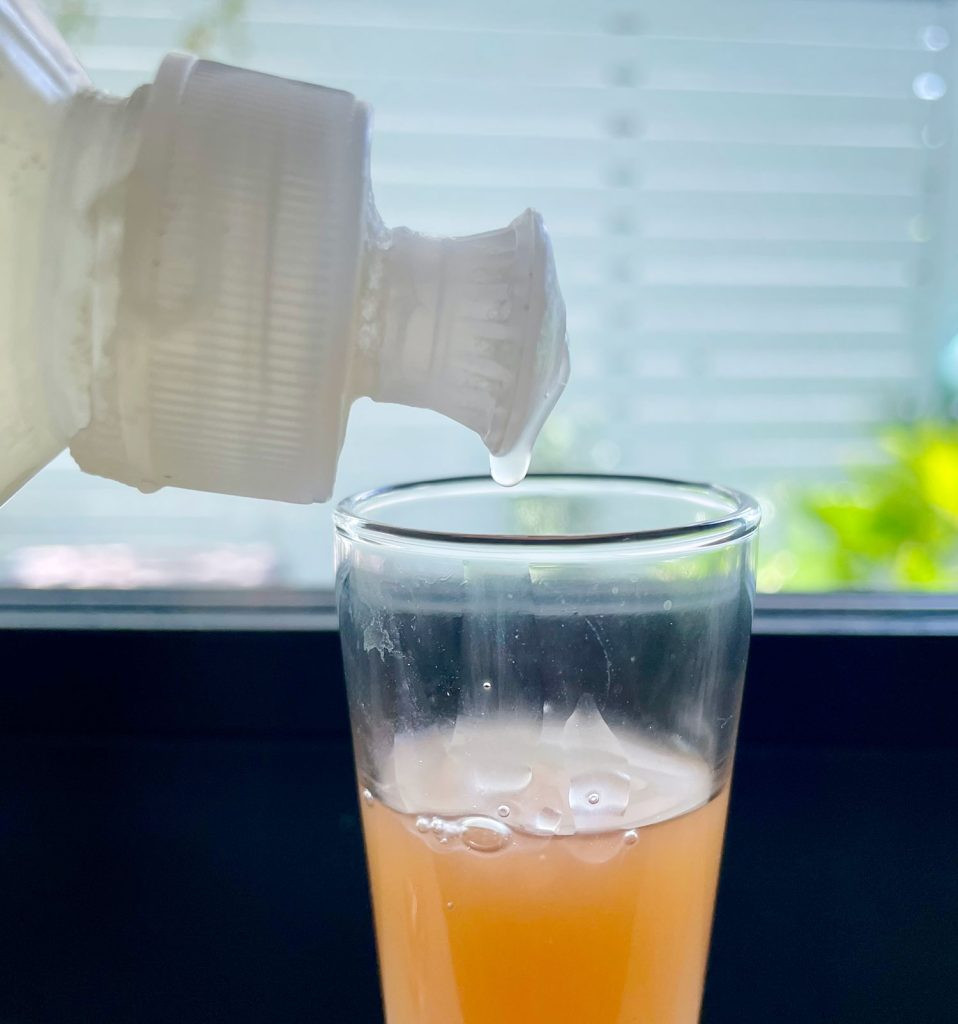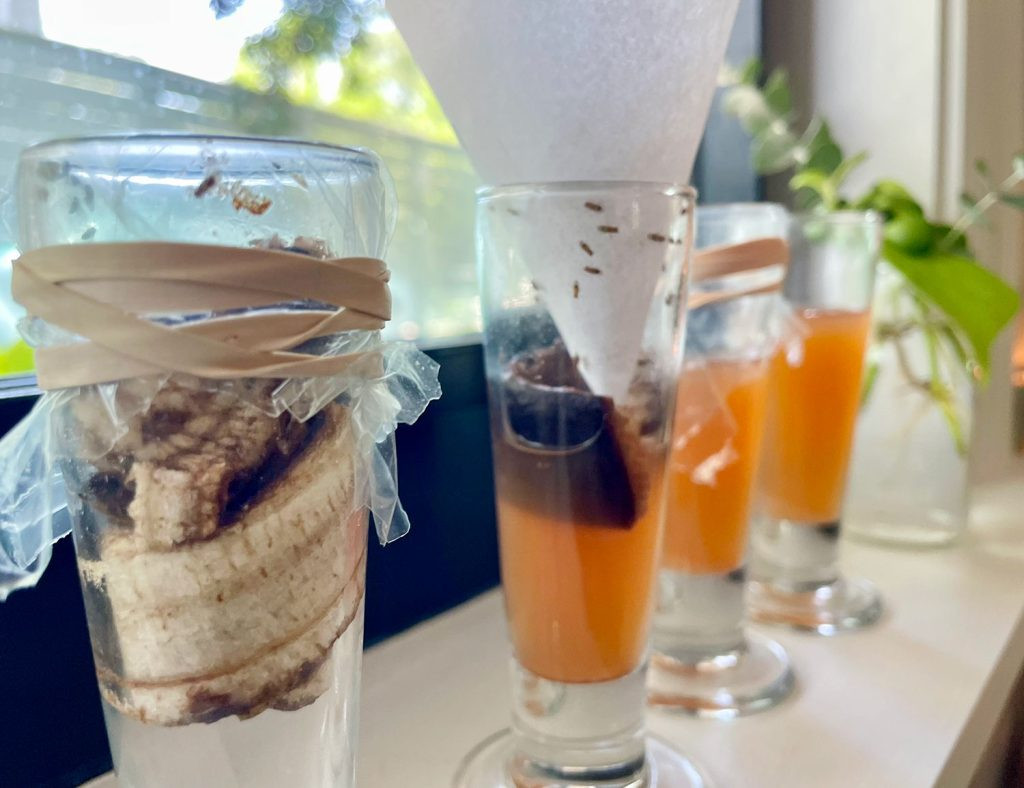Are tiny flies buzzing around your fruit bowl or hovering near your kitchen sink? You’re likely dealing with gnats or fruit flies, common household pests that can quickly become a nuisance. While these little bugs are undeniably annoying, the good news is that eliminating them doesn’t require harsh chemicals or expensive solutions. In fact, you can often tackle the problem using simple items you already have in your home.
This guide will walk you through effective DIY traps to get rid of fruit flies and gnats, focusing on easy-to-make solutions with readily available ingredients. We’ll also explore the subtle differences between these pests and provide essential prevention tips to keep your kitchen and home gnat and fruit fly-free in the long run. Let’s reclaim your space from these pesky invaders!
Understanding Your Tiny Invaders: Fruit Flies vs. Gnats
Before diving into eradication methods, it’s helpful to understand what you’re dealing with. People often use “gnats” and “fruit flies” interchangeably, and while there’s overlap, they aren’t exactly the same. Distinguishing between them can sometimes help pinpoint the source of the problem and refine your approach.
-
Fruit Flies: As their name suggests, fruit flies (also known as vinegar flies) are strongly attracted to ripe, rotting, or fermented fruits and vegetables. They are small, typically tan or brownish, with red eyes and resemble miniature houseflies. You’ll often find them swarming around fruit bowls, open bottles of wine or juice, garbage disposals, and trash cans – anywhere there’s fermenting organic matter.
 Close Up Of Fruit Fly On Paper Funnel
Close Up Of Fruit Fly On Paper Funnel -
Fungus Gnats: Fungus gnats, on the other hand, are often associated with houseplants. These slender, dark-bodied flies resemble tiny mosquitoes and are attracted to moist soil and decaying organic matter found in potting mix. If you notice small flies hovering around your indoor plants, especially when you water them, you’re likely dealing with fungus gnats.
-
Drain Flies: While less commonly confused with fruit flies, drain flies are another small, fuzzy, moth-like insect you might encounter. As their name implies, they are typically found near drains, sinks, and damp areas where organic matter accumulates.
While these distinctions exist, many DIY traps are effective against both fruit flies and fungus gnats, as they exploit general fly attraction to sweet or fermenting substances. If you’re unsure, trying a simple trap is a great way to confirm if you have fruit flies and start tackling the problem.
DIY Fruit Fly and Gnat Traps: Simple and Effective Methods
Getting rid of fruit flies or gnats doesn’t have to be complicated or break the bank. Here are four easy-to-make traps using common household items, each designed to lure these pests in and prevent their escape:
1. The Paper Funnel Trap
This classic trap uses a paper funnel to guide fruit flies into a container baited with apple cider vinegar, making it difficult for them to fly back out.
 DIY Fruit Fly Trap With Paper Funnel
DIY Fruit Fly Trap With Paper Funnel
Supplies:
- Small clear jar, cup, or container (a narrow opening is beneficial)
- Piece of paper or cardstock
- Tape
- Scissors
- Apple cider vinegar (ACV)
Instructions:
- Prepare the Container: Choose a small, clear container. A mason jar, an old food jar, or even a plastic cup will work. Clear containers allow you to monitor the trap’s success.
- Add the Bait: Pour a bit of apple cider vinegar into the bottom of the container – about an inch or two. The sweet, fermented scent is irresistible to fruit flies. You can also use old wine or beer as alternatives.
- Create the Funnel: Take a piece of paper or cardstock and roll it into a cone shape. The key is to have a very small opening at the narrow tip of the cone, just large enough for a fruit fly to enter. Secure the cone shape with tape. Trim the wider end of the cone if needed so it sits nicely in your container opening.
- Assemble the Trap: Place the wide end of the paper funnel into the opening of your container. Ensure the funnel sits securely and the tip is positioned above the vinegar, not submerged. Tape the edges of the funnel to the container if necessary to eliminate any gaps where flies could escape.
- Placement: Place the trap near areas where you’ve seen fruit fly activity, such as fruit bowls, sinks, or garbage cans.
2. The Plastic Wrap Trap
Similar to the funnel trap, this method uses plastic wrap with tiny holes to trap fruit flies, again using apple cider vinegar as the primary attractant.
Supplies:
- Small clear jar, cup, or container
- Rubber band
- Plastic wrap or a plastic bag
- Toothpick
- Apple cider vinegar (ACV)
Instructions:
- Container and Bait: As with the funnel trap, select a clear container and pour apple cider vinegar into the bottom.
- Plastic Wrap Cover: Stretch a piece of plastic wrap tightly over the opening of the container. Secure it firmly with a rubber band around the rim. Make sure the plastic wrap is taut, like a drum.
- Poke Entry Holes: Use a toothpick to gently poke a few small holes in the plastic wrap. These holes should be just large enough for fruit flies to enter. Don’t make them too big, or the flies will easily escape.
- Placement: Position the trap in areas where fruit flies are prevalent.
3. The Dish Soap Trap
This trap is even simpler, relying on dish soap to break the surface tension of the apple cider vinegar, causing fruit flies to sink and drown.
 Dripping Dish Soap Into Apple Cider Vinegar For DIY Fruit Fly Trap
Dripping Dish Soap Into Apple Cider Vinegar For DIY Fruit Fly Trap
Supplies:
- Small container, bowl, or dish
- Dish soap
- Apple cider vinegar (ACV)
Instructions:
- Vinegar Base: Pour apple cider vinegar into your chosen container. You don’t need a lot, just enough to cover the bottom.
- Add Dish Soap: Add a few drops of dish soap to the vinegar. Just a squirt or two is sufficient. Gently stir to mix.
- Placement: Place the dish soap trap in fruit fly hotspots. The sweet scent of the vinegar attracts them, and the soap ensures they get trapped in the liquid.
4. The Rotting Fruit Trap
For a truly irresistible lure, especially if apple cider vinegar traps are less effective, try using actual fruit as bait. This method plays directly to fruit flies’ primary attraction.
Supplies:
- Small glass jar, cup, or container
- Plastic wrap or paper funnel (depending on your preference)
- A piece of overripe fruit, like a banana peel, apple slice, or strawberry
Instructions:
- Fruit Bait: Place a piece of ripe or overripe fruit in the bottom of your container. Banana peels, bruised apples, peach slices, or even a chunk of melon work well.
- Trap Mechanism: Cover the container opening with either plastic wrap (poked with small holes) or a paper funnel, just as described in methods 1 and 2.
- Placement and Replacement: Place the fruit trap in infested areas. Be aware that the fruit will continue to rot, so you may need to replace the bait every couple of days to avoid unpleasant odors and maintain effectiveness.
Which Bait Works Best? Fruit vs. Vinegar
While apple cider vinegar is a widely recommended and effective lure, experiments have shown that fruit flies are often even more attracted to actual rotting fruit. Testing different baits can help you optimize your trap’s success.
In one test, banana peel and strawberry proved to be significantly more effective than apple slices or even apple cider vinegar alone. Strawberry, in particular, became increasingly attractive as it ripened further. Therefore, consider incorporating a piece of ripe fruit, especially banana peel or strawberry, into any of the trap methods above for potentially enhanced results. You can even combine fruit with apple cider vinegar in a single trap.
 4 DIY Fruit Fly Traps Close Up
4 DIY Fruit Fly Traps Close Up
If you find apple cider vinegar traps are not yielding significant catches, switching to fruit bait might be the key to effectively getting rid of your fruit fly problem.
Store-Bought Fruit Fly and Gnat Traps: When to Buy
While DIY traps are highly effective and cost-efficient, there are situations where store-bought fruit fly traps might be a convenient alternative. If you prefer a more discreet solution or want a trap that can also catch other types of flying insects, pre-made traps are worth considering.
 Collage of Storebought Fruit Fly Traps
Collage of Storebought Fruit Fly Traps
Brands like Terro offer fruit fly traps that are readily available online and in many stores. These traps often use a non-toxic liquid lure and are designed to be less visually obtrusive than homemade setups. While they may not always outperform a well-baited DIY trap in speed, they are effective at catching fruit flies over time and can be left out continuously.
Store-bought traps can be particularly useful if:
- You want a trap that blends in with your kitchen décor.
- You prefer not to handle rotting fruit or vinegar.
- You need a solution that can be left out for extended periods.
- You want to target a broader range of small flying insects.
However, for immediate and often more rapid results, especially when using fruit bait, DIY traps remain a highly effective and economical choice.
Preventing Fruit Flies and Gnats: Long-Term Solutions
Traps are excellent for eliminating existing fruit flies and gnats, but preventing future infestations is crucial for long-term control. Here are key preventative measures to implement:
- Maintain Kitchen Cleanliness: Wipe down countertops, stovetops, tables, and sinks daily to remove food residue and spills, especially sugary substances and liquids. Pay attention to areas where crumbs or sticky residues might accumulate.
- Promptly Dispose of Trash: Empty kitchen trash cans frequently, ideally daily. Food scraps in the trash, especially fruit and vegetable waste, are prime breeding grounds for fruit flies.
- Manage Ripe Produce: Regularly inspect fruit bowls and countertops for overripe or damaged fruits and vegetables. Dispose of them promptly. Consider storing ripe produce in the refrigerator to slow down ripening and reduce fruit fly attraction.
- Wash Produce Immediately: Wash fruits and vegetables as soon as you bring them home from the store. This helps remove any fruit fly eggs or larvae that may be present on the surface. (Note: Berries are best washed just before consumption to prevent premature spoilage).
- Refrigerate Susceptible Produce: When possible, store fruits and vegetables that ripen quickly or are prone to fruit fly attraction (like bananas, peaches, and tomatoes) in the refrigerator.
- Clean Drains and Garbage Disposals: Regularly clean sink drains and garbage disposals to eliminate food debris buildup. Flush drains with hot water and consider using a drain cleaner periodically. For garbage disposals, grind ice cubes and citrus peels to help clean and freshen them.
- Address Indoor Plants (for Fungus Gnats): If fungus gnats are a recurring problem around houseplants, allow the topsoil to dry out slightly between waterings, as fungus gnats thrive in consistently moist soil. You can also use specialized sticky traps designed for fungus gnats near your plants.
By combining effective trapping methods with diligent preventative practices, you can successfully get rid of gnats and fruit flies and keep your home pest-free. Don’t be discouraged if these pests appear – with a little effort and these strategies, you can quickly regain control of your kitchen and living spaces!